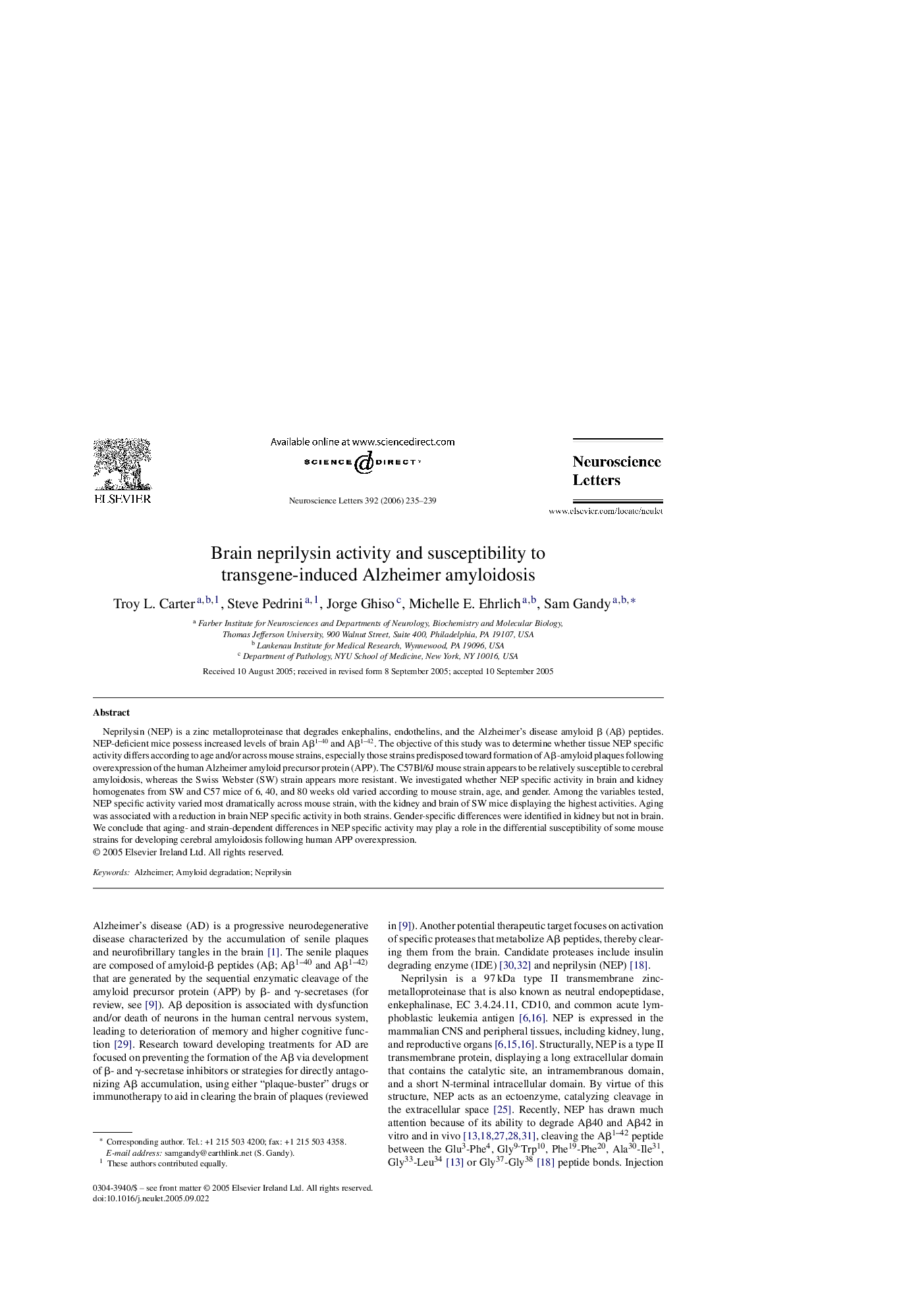| Article ID | Journal | Published Year | Pages | File Type |
|---|---|---|---|---|
| 4351257 | Neuroscience Letters | 2006 | 5 Pages |
Neprilysin (NEP) is a zinc metalloproteinase that degrades enkephalins, endothelins, and the Alzheimer's disease amyloid β (Aβ) peptides. NEP-deficient mice possess increased levels of brain Aβ1–40 and Aβ1–42. The objective of this study was to determine whether tissue NEP specific activity differs according to age and/or across mouse strains, especially those strains predisposed toward formation of Aβ-amyloid plaques following overexpression of the human Alzheimer amyloid precursor protein (APP). The C57Bl/6J mouse strain appears to be relatively susceptible to cerebral amyloidosis, whereas the Swiss Webster (SW) strain appears more resistant. We investigated whether NEP specific activity in brain and kidney homogenates from SW and C57 mice of 6, 40, and 80 weeks old varied according to mouse strain, age, and gender. Among the variables tested, NEP specific activity varied most dramatically across mouse strain, with the kidney and brain of SW mice displaying the highest activities. Aging was associated with a reduction in brain NEP specific activity in both strains. Gender-specific differences were identified in kidney but not in brain. We conclude that aging- and strain-dependent differences in NEP specific activity may play a role in the differential susceptibility of some mouse strains for developing cerebral amyloidosis following human APP overexpression.
